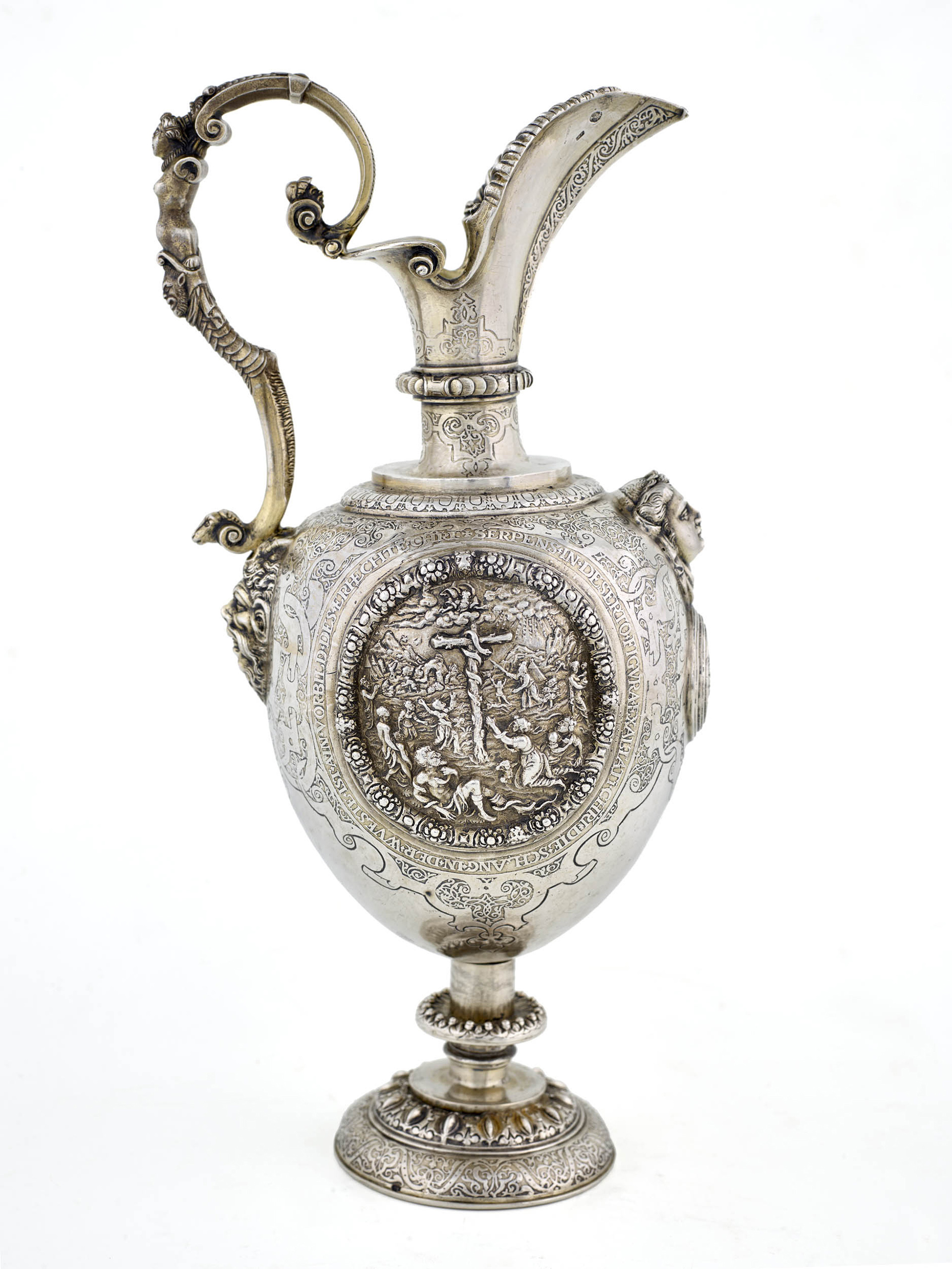This ewer set consists of an ovoid-shaped jug and a flat circular basin with a raised rim. Circular medallions depicting the Sacrifice of Isaac and the Raising of the bronze serpent adorn the sides of the jug and are surrounded by inscriptions taken from the Letter of St Paul to the Hebrews (11:17) and the Gospel of John (3:14) respectively, both legends being New Testament interpretations of the Old Testament prefiguration of the sacrifice of God's only-begotten son and his death on the Cross. A female mask crowns the front belly of the jar on which is engraved a shield flanked by the initials IW and VH, corresponding to Johann Wilhelm, Count of Herberstein.
The field of the circular tray is decorated with four medals with motifs of The Annunciation, The Adoration of the Shepherds, Calvary and The Resurrection, all surrounded by literal quotations from the New Testament with the source specified. The bottoms of the tray and jug are decorated with arabesque motifs.
J-M. Cruz Valdovinos (1997, p. 153) has identified three marks. 153) has identified three marks: the locality mark corresponds, according to Helmut Seling (1980, III nº664), to the variant used by the Augsburg silversmiths between 1570 and 1575; the silversmith's mark, according to the same source, belongs to Ulrich Schönmacher, active between 1553 and 1585, and the third is the one used by the Austro-Hungarian Empire to mark ancient works at the beginning of the 19th century, around 1806-7, the terminus post quem of its entry into the Medinaceli collection.
Helmut Seling catalogued an ewer set identical to this one, but made of gilded silver, which was then in a private collection but in 1922 was still in the Eggenberg Palace in Graz, owned by the Counts of Herberstein. It was acquired in 2005 for the collection of the Prince of Liechtenstein and is on display at the Garden Palace in Vienna (SI 258). Helmut Seling, in the aforementioned cataloguing, considered this piece to have a baptismal function, however J-M. Cruz Valdovinos (1997, p. 155), considering its iconography linked to the Eucharist, considers it more logical that its liturgical use was the ritual ablution of hands.


